Proud Boys Leader, Henry Enrique Tarrio 2023-10
Proud Boys Leader, Henry Enrique Tarrio 2023-10

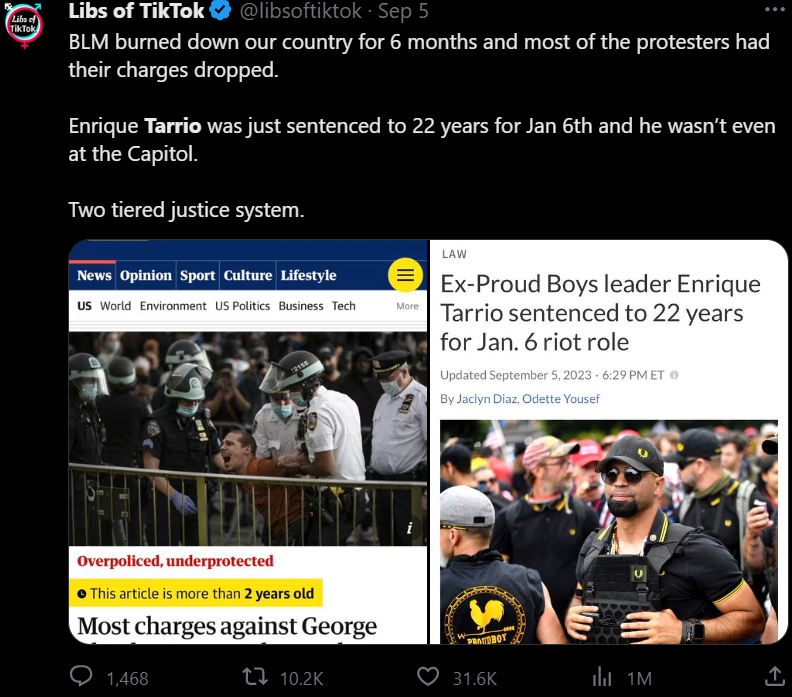
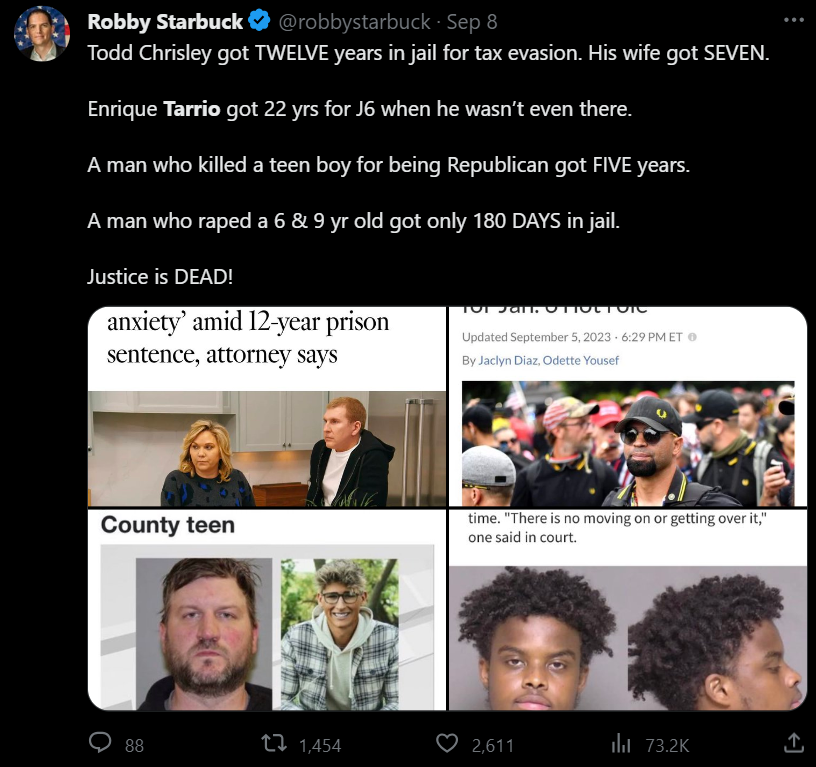

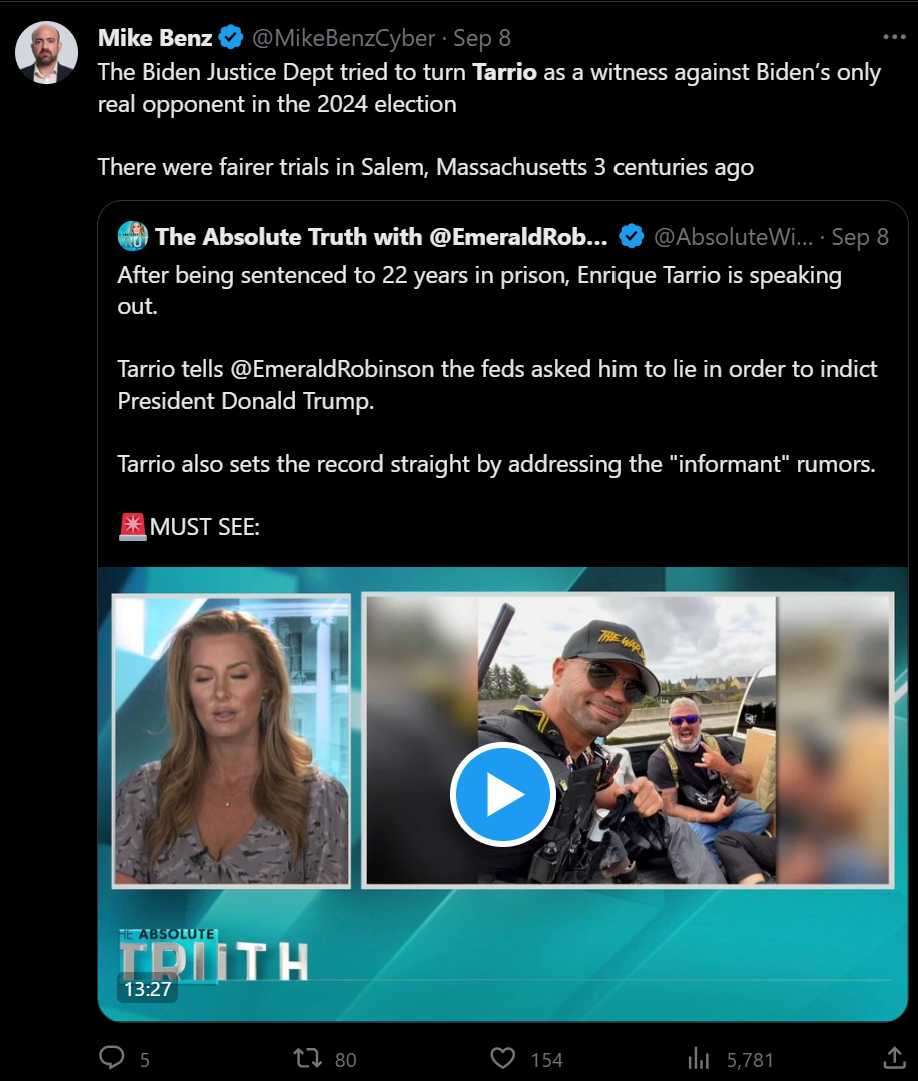
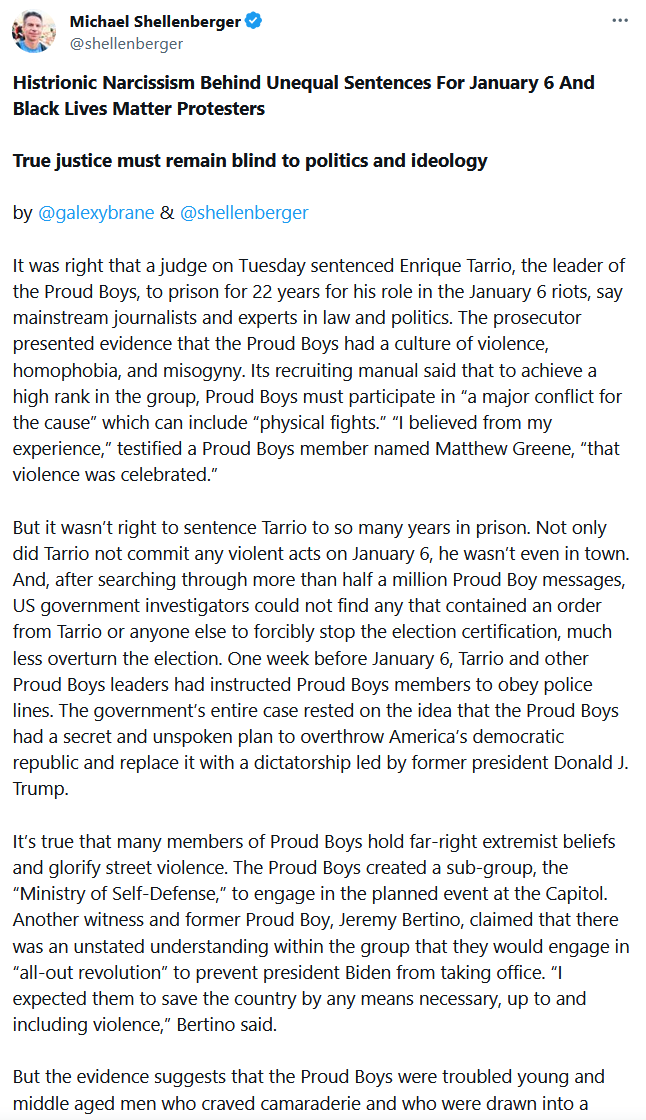
- Henry Tarrio Michael Shellenberger 2023-10-08 nKVS
- https://x.com/shellenberger/status/1699850497736470880
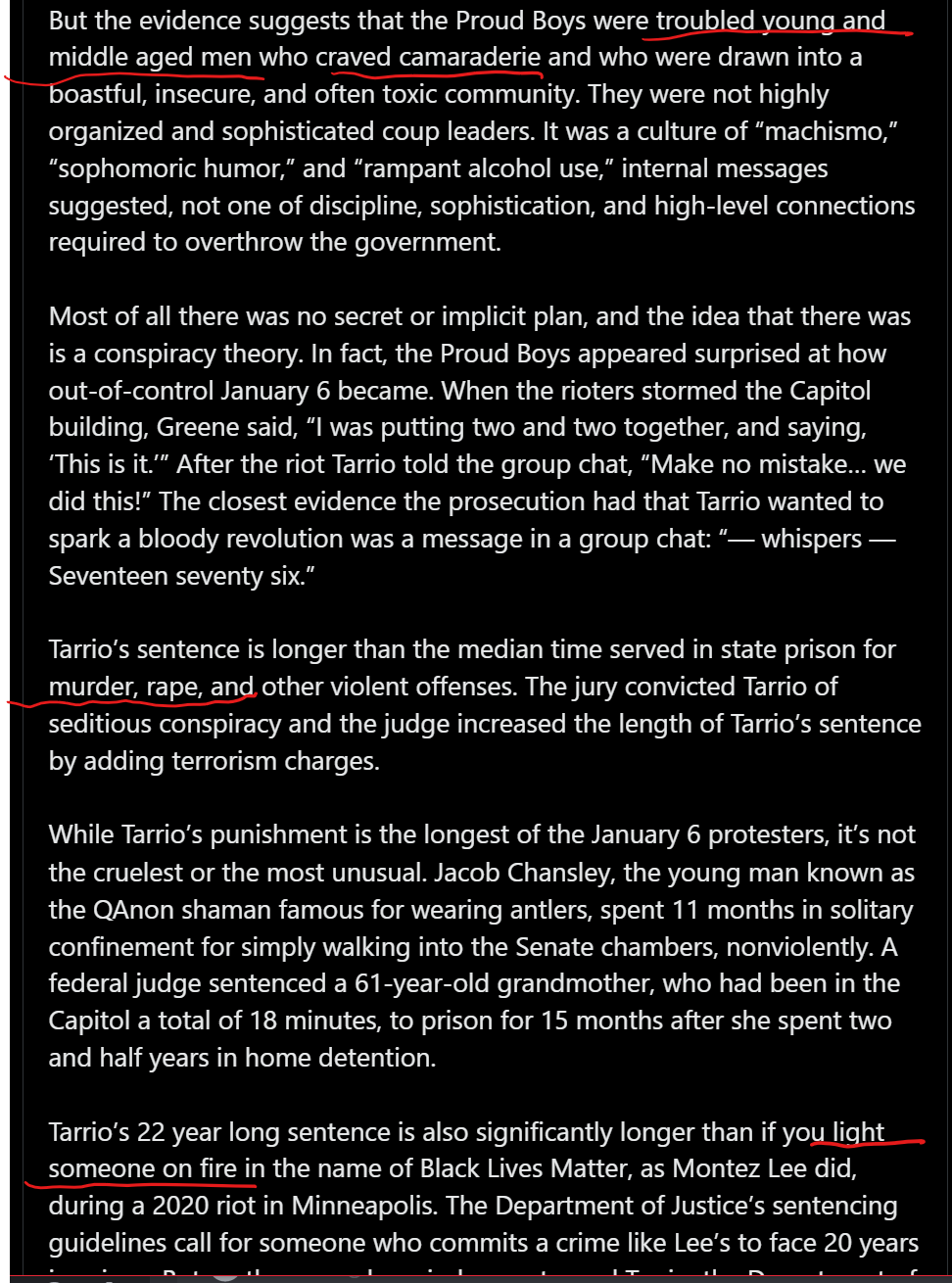
Histrionic Narcissism Behind Unequal Sentences For January 6 And Black Lives Matter Protesters
True justice must remain blind to politics and ideology
by @galexybrane & @shellenberger
- It was right that a judge on Tuesday sentenced Enrique Tarrio, the leader of the Proud Boys, to prison for 22 years for his role in the January 6 riots, say mainstream journalists and experts in law and politics.
- The prosecutor presented evidence that the Proud Boys had a culture of violence, homophobia, and misogyny.
- Its recruiting manual said that to achieve a high rank in the group, Proud Boys must participate in “a major conflict for the cause” which can include “physical fights.” “I believed from my experience,” testified a Proud Boys member named Matthew Greene, “that violence was celebrated.”
- But it wasn't right to sentence Tarrio to so many years in prison.
- Not only did Tarrio not commit any violent acts on January 6, he wasn't even in town.
- And, after searching through more than half a million Proud Boy messages, US government investigators could not find any that contained an order from Tarrio or anyone else to forcibly stop the election certification, much less overturn the election.
- One week before January 6, Tarrio and other Proud Boys leaders had instructed Proud Boys members to obey police lines.
- The government's entire case rested on the idea that the Proud Boys had a secret and unspoken plan to overthrow America's democratic republic and replace it with a dictatorship led by former president Donald J.
- Trump.
- It's true that many members of Proud Boys hold far-right extremist beliefs and glorify street violence.
- The Proud Boys created a sub-group, the “Ministry of Self-Defense,” to engage in the planned event at the Capitol.
- Another witness and former Proud Boy, Jeremy Bertino, claimed that there was an unstated understanding within the group that they would engage in “all-out revolution” to prevent president Biden from taking office. “I expected them to save the country by any means necessary, up to and including violence,” Bertino said.
- But the evidence suggests that the Proud Boys were troubled young and middle aged men who craved camaraderie and who were drawn into a boastful, insecure, and often toxic community.
- They were not highly organized and sophisticated coup leaders.
- It was a culture of “machismo,” “sophomoric humor,” and “rampant alcohol use,” internal messages suggested, not one of discipline, sophistication, and high-level connections required to overthrow the government.
- Most of all there was no secret or implicit plan, and the idea that there was is a conspiracy theory.
- In fact, the Proud Boys appeared surprised at how out-of-control January 6 became.
- When the rioters stormed the Capitol building, Greene said, “I was putting two and two together, and saying, ‘This is it.’” After the riot Tarrio told the group chat, “Make no mistake… we did this!” The closest evidence the prosecution had that Tarrio wanted to spark a bloody revolution was a message in a group chat: “ — whispers — Seventeen seventy six.”
- Tarrio's sentence is longer than the median time served in state prison for murder, rape, and other violent offenses.
- The jury convicted Tarrio of seditious conspiracy and the judge increased the length of Tarrio's sentence by adding terrorism charges.
- While Tarrio's punishment is the longest of the January 6 protesters, it's not the cruelest or the most unusual.
- Jacob Chansley, the young man known as the QAnon shaman famous for wearing antlers, spent 11 months in solitary confinement for simply walking into the Senate chambers, nonviolently.
- A federal judge sentenced a 61-year-old grandmother, who had been in the Capitol a total of 18 minutes, to prison for 15 months after she spent two and half years in home detention.
- Tarrio's 22 year long sentence is also significantly longer than if you light someone on fire in the name of Black Lives Matter, as Montez Lee did, during a 2020 riot in Minneapolis.
- The Department of Justice's sentencing guidelines call for someone who commits a crime like Lee's to face 20 years in prison.
- But on the same day a judge sentenced Tarrio, the Department of Justice argued in a sentencing memorandum that, because BLM protesters “felt angry, frustrated, and disenfranchised,” the judge should reduce his sentence to 10 years, which is less than half the sentence length of Tarrio.
- The New York Times explained that federal prosecutors dismissed BLM charges by the thousands because “protesters were exercising their basic civil rights,” and in most cases that is probably true.
- But in demanding harsh sentences for nonviolent January 6 rioters and leniency for violent BLM rioters, Biden's Justice Department is openly engaging in political prosecutions.
- Where federal prosecutors brought charges against 1,146 people connected to the January 6 riot, they only brought charges against 300 people connected to BLM riots across the country.
- Where at least 10,000 people were arrested in the summer of 2020, some for minor offenses but others for burglary, looting, or assault, in BLM riots, about 2,000 January 6 protesters entered the Capitol Building.
- Millions of people participated in BLM protests and riots, which resulted in $2 billion in property damages, 25 deaths, and hundreds of injuries and assaults.
- As of the latest estimates from August 2021, about 10 people received prison terms of 5 years or more in connection to BLM riots.
- For comparison, out of 10,000 people present at the January 6 riot, at least 23 have received sentences longer than 5 years, some for nonviolent offenses.
- By one estimate, prosecutors dropped 90% of charges brought against BLM rioters in local jurisdictions.
- In Dallas and Philadelphia, where protests turned violent, prosecutors decided against prosecuting 95% of all citations issued.
- It is tempting to dismiss the disparity between the treatment of January 6 and BLM protesters as a consequence of partisan judges and juries, but it was a Trump-appointed judge who sentenced Tarrio.
- There appears to be no significant difference in the treatment of January 6 protesters by judges appointed by Republicans than by judges appointed by Democrats.
- What, then, explains the radically different sentences given to BLM protesters as compared to January 6 ones?